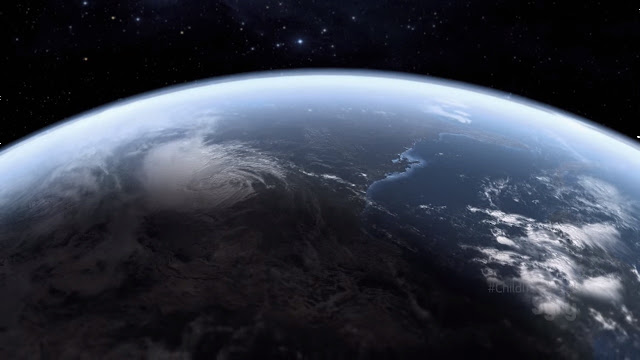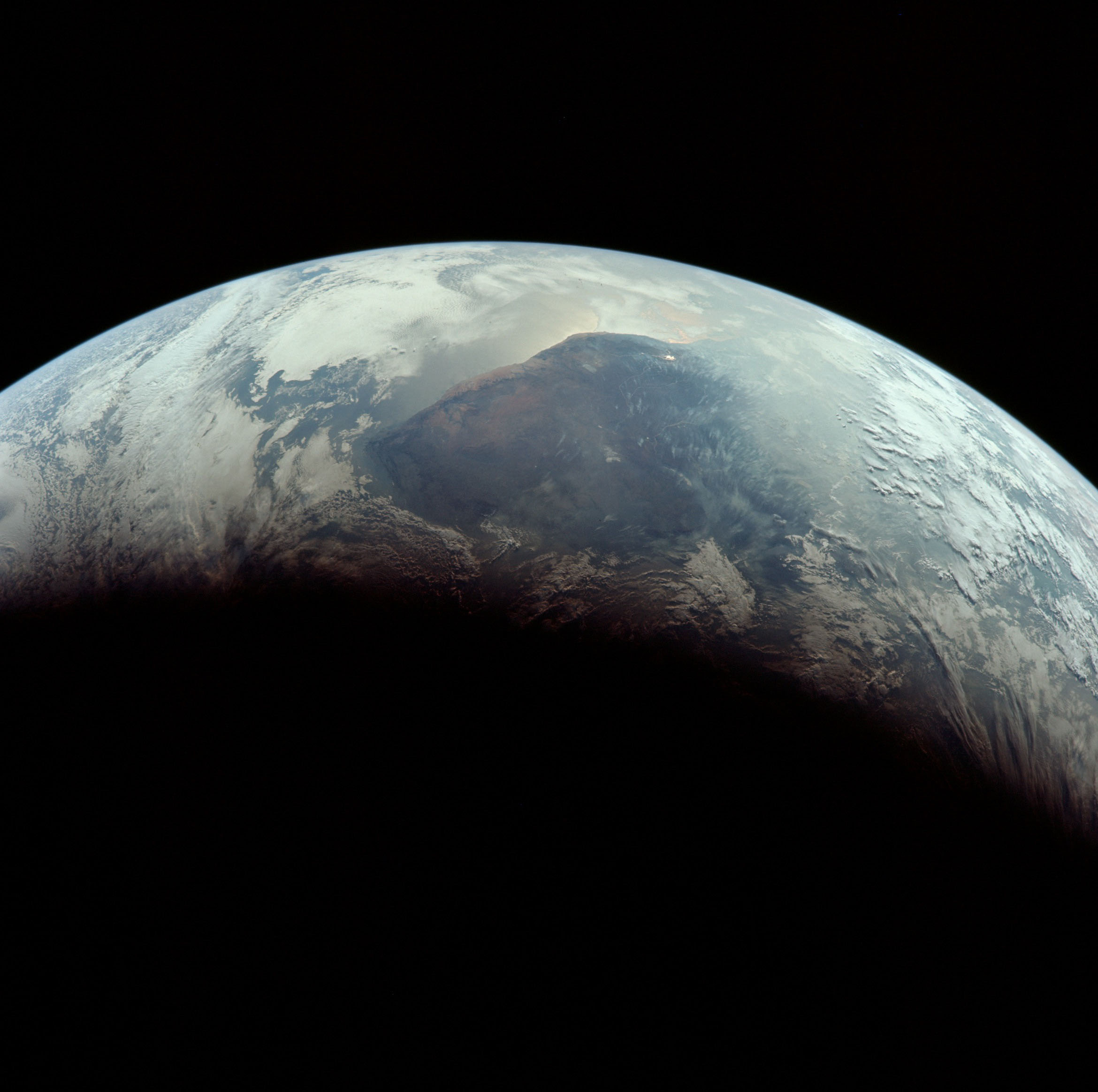Sloppy CGI
 |
| Opening shot of Childhood's End trailer |
I also recognize that I am very amateur myself at CGI, planet shots being the only thing I have really done a lot of. Then again, I have done a lot of them and I think I am pretty good.
The first thing that jumped out at me was the motion of the clouds (you have to watch the video to see it). From the beginning of the shot to the end the clouds move some 70 miles. During the real time it would take for the clouds to move that distance they would have changed shape, small ones drastically even disappearing, larger ones less so. Go watch the weather radar on TV where they loop the last few hours of radar data and you will see what I am talking about. Would have been better if the clouds didn't move at all.
Next are the clouds themselves. There is a tropical storm over Oklahoma. That is very rare and odd. You can also see the clouds over the Gulf of Mexico repeat a pattern, also very odd for clouds.
This cloud texture they are using was published by NASA in 2002 for the Visible Earth image collection. It was made using data from the MODIS instrument on the Terra satellite. It is the same texture I use for my renders and is one of the highest quality ones freely available on the web. But it does contain a number of artifacts which include regions that have been copied and pasted to fill in a holes in the MODIS data. These holes are caused by the normal patterns of polar orbiting spacecraft.
Additionally that storm over Oklahoma was actually located in the northern Pacific ocean, due east of Japan and due south of the Kamchatka Peninsula. It is very characteristic of oceanic storms, but unusual for the middle of Tornado Alley.
 |
| Data captured by MODIS in orbit. Note the holes in the data near the equator. |
Lastly, the atmosphere. This is one of my pet peeves with computer generated orbital shots of the earth. Most of the time a few blurring effects are used at the limb (where the edge of the Earth meets space in an image) to recreate the increased scattering effects caused by the thickening of the atmosphere at that point. But this technique, while effective in some shots, leaves a lot to be desired. In the shot from SyFy we also see the terminator, the location where the Earth goes from day to night.
We all know that when the sun sets the sky goes from blue to bright orange or even red. This is due to the way the atmosphere scatters blue light more than other colors. During the day most of the blue light gets scattered at random angles, some of which reaches us on the ground and some gets sent out into space. This is why the sky looks blue from the ground and the Earth looks blue from space. But when the sun sets and its light has to pass through more of the atmosphere all the blue light gets scattered out and all that is left are reddish orange colors. This is visible from space.
 |
| Image of the Earth from space. Notice the reddish tint of the atmosphere at the edge of the night side. |
 |
| Computer generated image (CGI) of the Earth created by me. Notice the more reddish tones along the edge of the night side. |
I know there are trade offs to every technique. Accuracy sometimes needs to be sacrificed for speed. While I recognize that was what happened in this case, it still broke the illusion for me. The curtain was peeled back for a few seconds exposing the man at the controls.

Comments